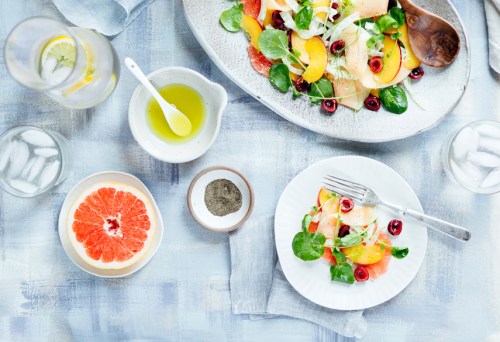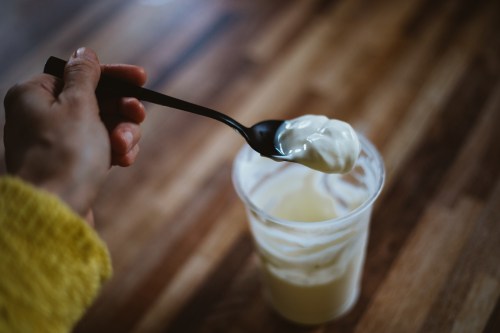Our editors independently select these products. Making a purchase through our links may earn Well+Good a commission
It’s official: Watercress has been deemed the “healthiest food” in the world. According to a study published by the CDC that examined 17 different nutrient markers (i.e., potassium, fiber, protein, and calcium) of 41 “powerhouse fruits and vegetables,” watercress scored the highest among them in terms of its “nutrient density” score, making it officially the “healthiest food” in the world with a perfect score of 100.
Experts in This Article
registered dietitian and author of Smoothies &
registered dietitian nutritionist and diabetes specialist in Los Angeles, California
Watercress isn’t the only leafy green known to offer powerful nutritional benefits, however: The top five foods on the list were all forms of greens. In order of nutrient density scores, this includes Chinese cabbage (91.99), chard (89.27), beet greens (87.08), and spinach (86.43). Ahead, we delve into the benefits of watercress and why noshing on leafy greens regularly can help boost health and protect against chronic illness.
(And, friendly but required reminder: This ranking system is solely meant to measure the nutrient-density, not value, of various foods. If you hate leafy greens, we’re all for that. Everyone’s definition of “healthy food” looks different, and the more we encourage diversity in meals, the more everyone wins. Okay, onward!)
4 benefits of watercress that make it the most nutrient-dense leafy green
1. Promotes bone health
According to Vandana Sheth, RDN, CDCES, author of My Indian Table: Quick & Tasty Vegetarian Recipes, watercress definitely deserves its high reputation from both a nutrition and flavor POV. For starters, she points out that the high vitamin K content of watercress, paired with its calcium levels (120 milligrams per 100-gram serving), can help promote bone health. For context, the same-size serving of whole milk contains 123 milligrams of calcium.
Additionally, watercress contains a considerable amount of vitamin K, another nutrient vital for bone health. Deficiencies in this vitamin can lead to weakening bones—think fractures, poor posture, back and/or neck pain, and the early signs of osteoporosis. Generally speaking, the recommended adequate intake (AI) for vitamin K is 120 micrograms for adult men and 90 micrograms for adult women. (One cup of chopped watercress contains 85 micrograms of vitamin K.)
(And, friendly but required reminder: This ranking system is solely meant to measure the nutrient-density, not value, of various foods. If you hate leafy greens, we’re all for that. Everyone’s definition of “healthy food” looks different, and the more we encourage diversity in meals, the more everyone wins. Okay, onward!)
2. Supports cardiovascular health
Watercress can also play a role in supporting cardiovascular health. “[Watercress] provides a wide array of antioxidants that may help decrease our risk for heart disease,” Sheth says. “Because of its mineral content—calcium, potassium, magnesium—and nitrates, watercress may help with blood pressure.” One cup (34 grams) of chopped watercress contains 112 milligrams of potassium (which is nearly one-third of the amount of potassium in a banana), seven milligrams of magnesium, and about 37 milligrams of nitrates.
Of note: Due to the high concentration of vitamin K found in watercress, anyone taking blood thinners should consult their doctors before adding a lot watercress to their diet. “Vitamin K plays an important role in blood clotting, and any drastic changes in vitamin K intake through diet can affect the medication’s effect,” Sheth says.
3. Decreases the risk of developing cancer
“Watercress contains isothiocyanates, which may help prevent cancer by aiding the body in getting rid of potential carcinogens,” says Frances Largeman-Roth, a registered dietitian, nutrition expert, and author of upcoming book Everyday Snack Tray. Isothiocyanates, she adds, are small molecules that reduce the activation of and increase the detoxification of carcinogens.
4. Promotes eye health
“Watercress can also help with eye health because of its carotenoids and vitamin C content,” Sheth says. One cup of chopped watercress contains 15 milligrams of vitamin C (about one-fifth of the vitamin C in an orange). While there is no specific recommended daily allowance for consuming carotenoids—like beta-carotene or alpha-carotene—a cup of chopped watercress contains 649 milligrams of beta-carotene, which converts to vitamin A in the body, thus helping boost eye health.
Some benefits of the additional leafy greens on the list
Although watercress ranked number one, the other four top nutrient-dense foods on the list also contain considerable health benefits. Remember: Chinese cabbage, chard, beet greens, and spinach all were within just a few points of watercress.
Cabbage is packed with minerals, including magnesium and calcium; chard contains high amounts of vitamins K, A, C, and E, magnesium, iron, and potassium. Beet greens, meanwhile, are a super source of iron, and spinach is high in folate, a B vitamin that research shows can help prevent the development of Alzheimer’s Disease, and potassium, an essential nutrient for muscle activity. But potentially the best part about spinach is that it can easily be added to a wide array of foods—think smoothies, soups, pasta, and sauces—for added nutrients and easily go undetected by the pickiest eaters.
So, how should we really feel about green juices? An RD spills the tea:
Sign Up for Our Daily Newsletter
Get all the latest in wellness, trends, food, fitness, beauty, and more delivered right to your inbox.
Got it, you've been added to our email list.











